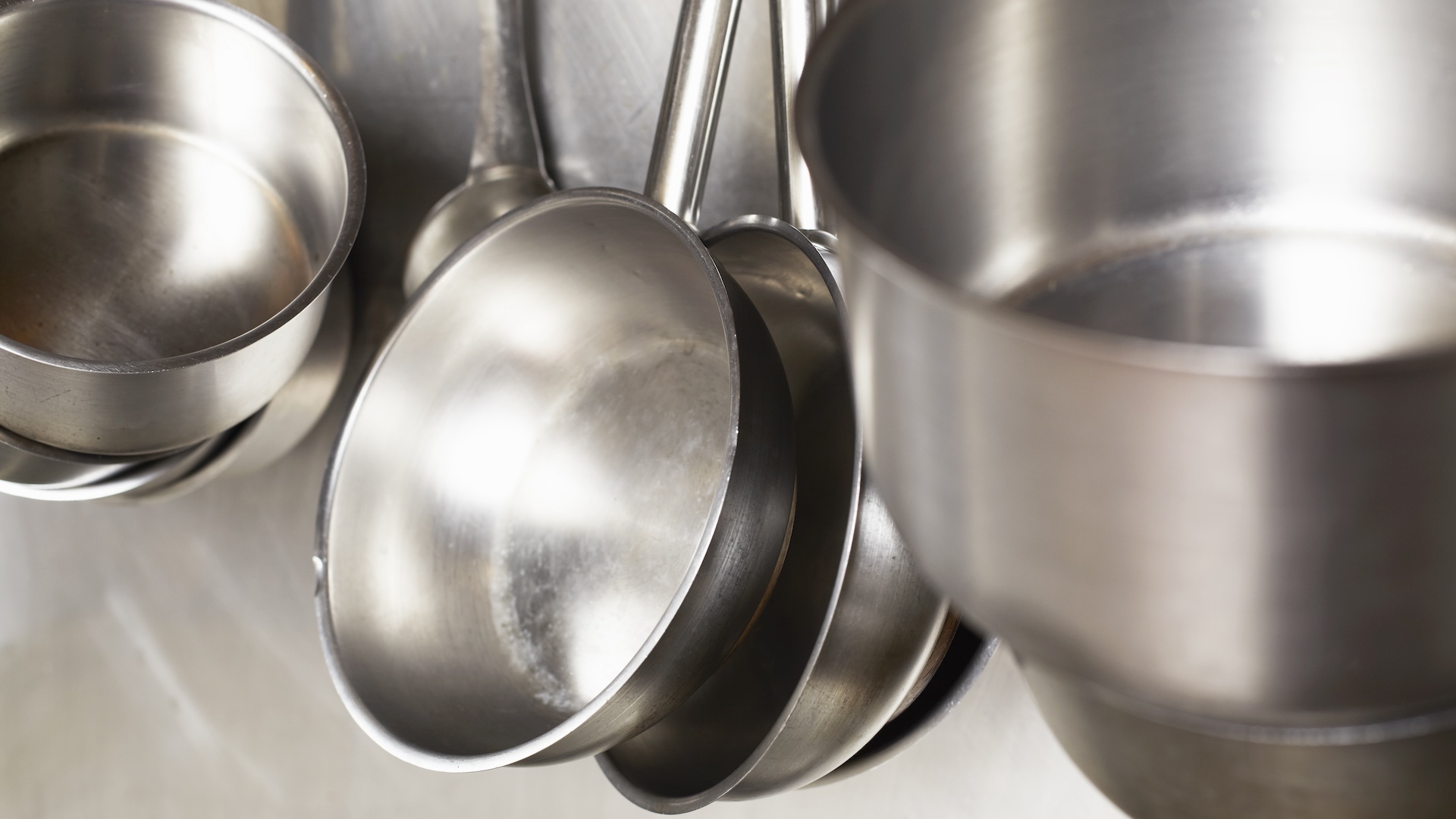Why doesn't stainless steel rust?
The special chemistry of this shiny iron alloy creates a protective layer on its surface that prevents it from rusting.

Rust is a constant threat to the iron all around us, which readily oxidizes in both air and water. Even steel — a hard alloy of iron with traces of carbon — easily rusts, which means oxidation damages the steel in buildings, cars and appliances.
But, as its name suggests, stainless steel doesn't seem to rust. So what's its secret?
Put simply, the chemistry of stainless steel keeps oxygen in the air and environment from reaching the iron in steel, preventing the harmful oxidation reaction.
Regular steel rusts when iron chemically reacts with oxygen to form iron oxide. Although rust generally isn't harmful to humans, it can drastically corrode iron and make it unsafe and ugly.
Related: Why does metal squeak?
Regular steel is an alloy of 99% iron and between about 0.2% and 1% carbon, while stainless steel typically contains between 62% and 75% iron, up to 1% carbon, and more than 10.5% chromium. Stainless steel also usually contains a few percent of nickel, which can make it both tougher and easier to work with.
The chromium is key to stainless steel's rust resistance, materials scientist Tim Collins, secretary-general of Worldstainless, a Belgium-based nonprofit allied with the World Steel Association industry group, told Live Science.
Get the world’s most fascinating discoveries delivered straight to your inbox.
Chromium reacts with oxygen in the environment — usually in the air, but also underwater — to create a "passive layer" of chromium oxide (Cr2O3) on the metal's surface. This layer prevents the oxygen from reaching iron in the steel to create rust, Collins explained.
The passive layer on stainless steel is only a few nanometers thick and thus invisible, he said. The layer of chromium oxide can also self-heal if it is damaged; it is inert, which means it doesn't chemically react with other substances; and it doesn't leach out beyond the surface of the metal, which makes stainless steel suitable for food production, surgery and other applications, Collins added.
Accidental discovery
Modern stainless steel was developed in 1912 by English metallurgist Harry Brearley, who was studying steel alloys to prevent corrosion in gun barrels.
Brearley created an alloy from iron, carbon, chromium and nickel. But it wasn't suitable for a gun barrel, so he threw it in his backyard, Collins said. A few weeks later, Brearley noticed the shiny alloy in his yard hadn't rusted — so he developed the material and introduced it to the world in 1915.
Collins said rustproof stainless steel now makes up about 4% of the steel used worldwide each year — almost 2 billion tons.
But stainless steel is complex and expensive to make — typically between three and five times the production cost of regular steel — and the inclusion of special metallic elements in the alloys (such as molybdenum for underwater applications) can make it more expensive still.
As a result, most applications that need steel use regular or carbon steel, either in conditions where it doesn’t rust or where it is protected by an outer layer of paint or some other coating.
Yet stainless steel is now used for more applications than ever, Collins said, including in food production and food safety.
Johns Hopkins University food scientist Kantha Shelke told Live Science that stainless steel has many advantages over the alternatives: it is resistant to corrosion from food acids and cleaning chemicals — unlike aluminum and copper — and doesn’t contaminate or taint any food that it touches.
Stainless steel is also durable, stronger than aluminum, and hygienic, with a non-porous surface that can be easily cleaned and sanitized, she wrote in an email.
Tom Metcalfe is a freelance journalist and regular Live Science contributor who is based in London in the United Kingdom. Tom writes mainly about science, space, archaeology, the Earth and the oceans. He has also written for the BBC, NBC News, National Geographic, Scientific American, Air & Space, and many others.



